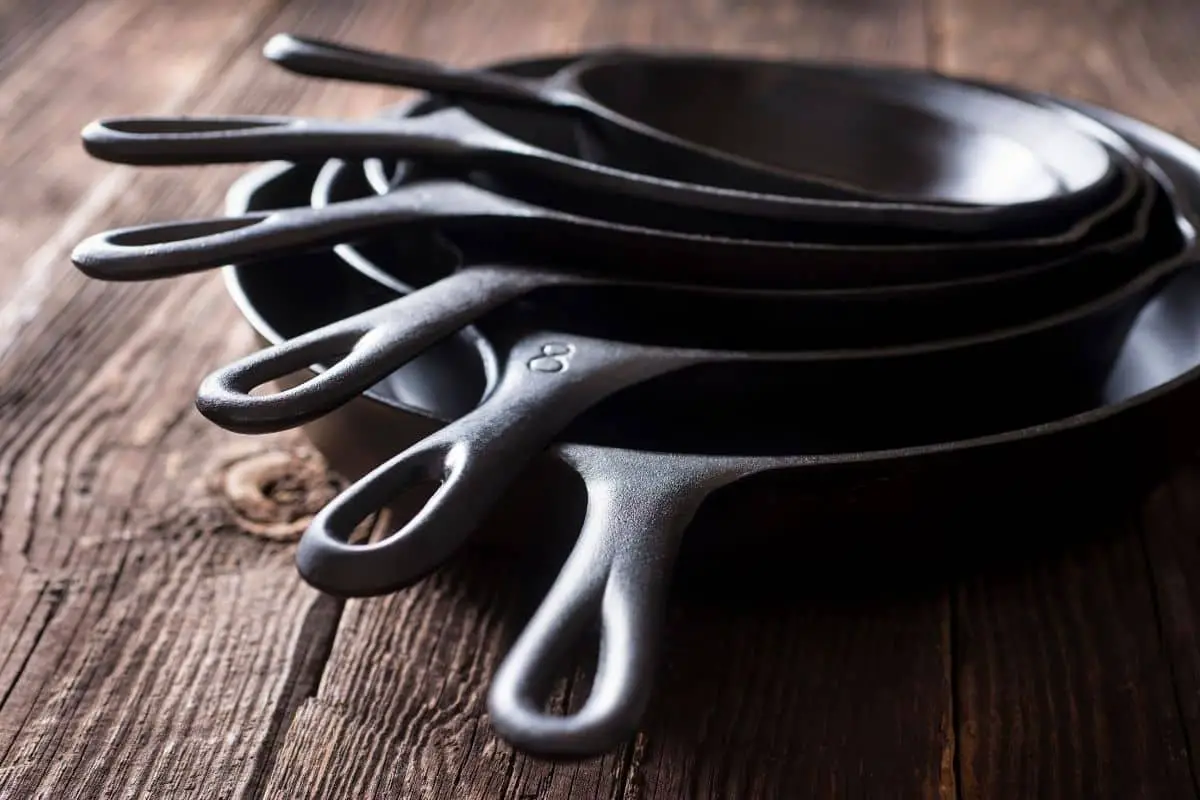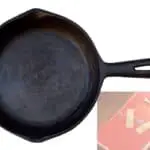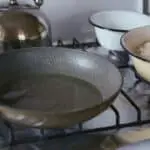Table of Contents
- What should a cast iron skillet look like?
- What are the signs that your cast-iron skillet is wearing down?
- Is it unhealthy to use a cast iron skillet that is wearing down?
- Final thoughts
What should a cast iron skillet look like?
Every cook knows what a cast iron skillet is. It’s what you use to fry up bacon, eggs, and pancakes on the stovetop or in the oven.
The only problem is that not all cast iron skillets are built alike! Some people think that they need an enameled one for cooking acidic food like tomato sauce; others swear by preseasoning theirs with oil before using it; while some prefer bare metal because it gets better seasoning over time.
So, what should a cast-iron skillet look like? This post will help you figure out what type of skillet to buy based on your needs!
A well-seasoned cast-iron pan should be rich black, smooth, and glossy to the touch. In addition, a cast-iron skillet must not look warped or worn out. It should not have any holes in it. The edges of the skillet must be smooth. Unseasoned cast iron has a gnarled appearance and feels until it is properly seasoned.
What are the signs that your cast-iron skillet is wearing down?
Here are some of the key signs that your cast-iron skillet is damaged:
The skillet is covered with rust
The first sign is that the skillet is covered with rust. This can be a sign that your pan is not drying or seasoning properly. Remember to dry the skillet after each use and coat it with oil before storing it!
The skillet has started to flake
Another sign that your cast-iron skillet may need replacing is if it starts to flake, which often happens from consistent exposure to high temperatures during cooking processes such as sautéing or frying food in butter.
The skillet is warped
A sign that your cast-iron skillet is damaged and needs to be replaced is if it has become warped. This often happens after years of exposure to heat, chemicals, or high temperatures during cooking processes such as sautéing food in butter.
There are gaps between the handle and pan body
If the handle and pan body do not fit tightly together, it’s time to replace your cast-iron skillet. You don’t want pieces of food or water getting trapped between them!
The bottom is rough
A sign that there may be something wrong with your cast iron skillet is if the bottom appears to have a rough finish instead of being smooth and glossy like usual. This can happen when you’re cooking acidic foods such as tomato sauce due to chemicals leaching into the metal over time from prolonged exposure. Make sure to avoid using this type of cookware for those types of dishes in order to protect its durability!
The seasoning is stripped
If the seasoning on your cast-iron skillet is stripped, then it’s time to replace it. To avoid this situation in the future always remember to dry and season your pan after every use!
Is it unhealthy to use a cast iron skillet that is wearing down?
No, it is not unhealthy to use a cast-iron skillet that is wearing down. However, you should consider replacing your pan if the signs listed above are present.
Final thoughts
This post gave you tips on what to look for when purchasing a cast iron skillet, both new and used. Make sure that it is free of rust, has no chips or dents in the metal, fits together properly with the handle secured tightly onto the body of the pan, has an even finish across its bottom surface (no rough patches), and comes pre-seasoned so you don’t need to spend time seasoning it yourself before using! After all your hard work making delicious meals in this durable cookware set make sure to take care of it by drying each piece after washing and coating them lightly with oil before storing. Don’t forget about any accessories like lids as well. They should be hand washed separately from




